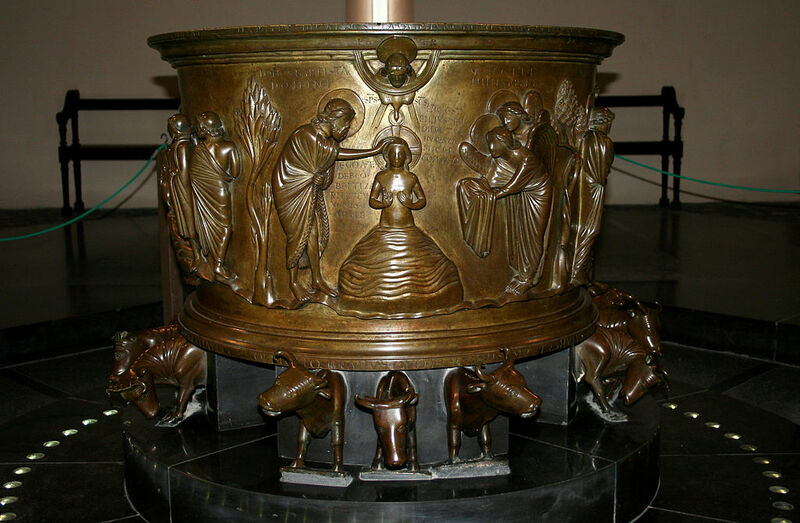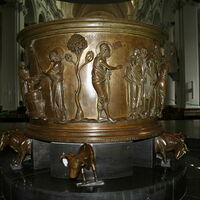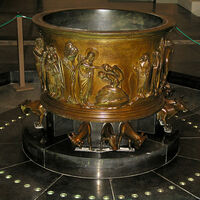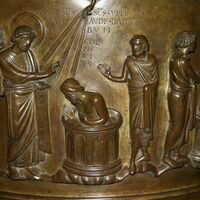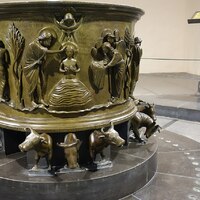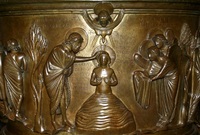Liège font
Type:
Baptismal fonts
Date:
early twelfth century
Location or Findspot (Modern-Day Country):
Belgium
Dimensions:
60 × 80 cm
Description:
A large bronze (or brass) font now in the church of St. Bartholomew at Liège was cast using the lost-wax method for a nearby abbey (it was hidden during the French Revolution and later moved, its original cover lost, to its current location). It is dated ca. 1107–18 based on references in the obituary of an abbot named Hellinus. The artist was not named, but a fourteenth-century chronicle credits the work to Renier of Huy, a goldsmith active in the Mosan region (named for the Meuse River). Nevertheless, the identity of the artist, patron, and place of manufacture remain controversial because the figures on the font exhibit naturalistic, classical-looking poses, proportions, and drapery treatment unprecedented in twelfth-century Mosan art.
Inscriptions in Latin identify the scenes: John the Baptist preaches and then baptizes several figures, including Jesus and a philosopher named Crato (an apocryphal episode, not a biblical one); and St. Peter baptizes the first gentile convert, the centurion Cornelius. The twelve oxen that support the basin underscore that the medieval Mosan font was intended to echo the large bronze basin made by Bezalel for the Temple of Solomon in Jerusalem (described in 1 Kings 7:23–25). These iconographic and material analogies elevated the artist, the patron, and the church that housed the font.
Inscriptions in Latin identify the scenes: John the Baptist preaches and then baptizes several figures, including Jesus and a philosopher named Crato (an apocryphal episode, not a biblical one); and St. Peter baptizes the first gentile convert, the centurion Cornelius. The twelve oxen that support the basin underscore that the medieval Mosan font was intended to echo the large bronze basin made by Bezalel for the Temple of Solomon in Jerusalem (described in 1 Kings 7:23–25). These iconographic and material analogies elevated the artist, the patron, and the church that housed the font.
Relevant Textbook Chapter(s):
7
Image Credits:
Wikimedia Commons
